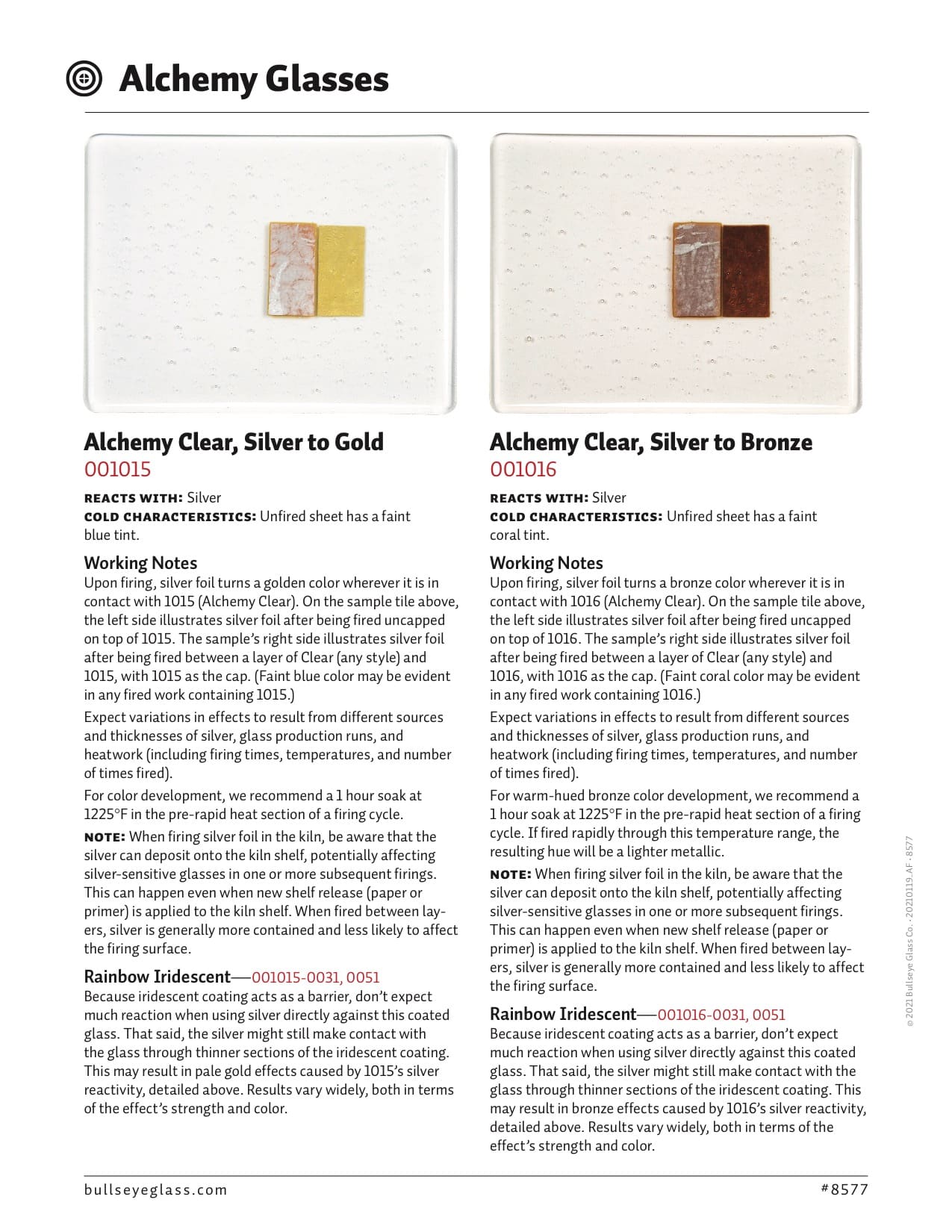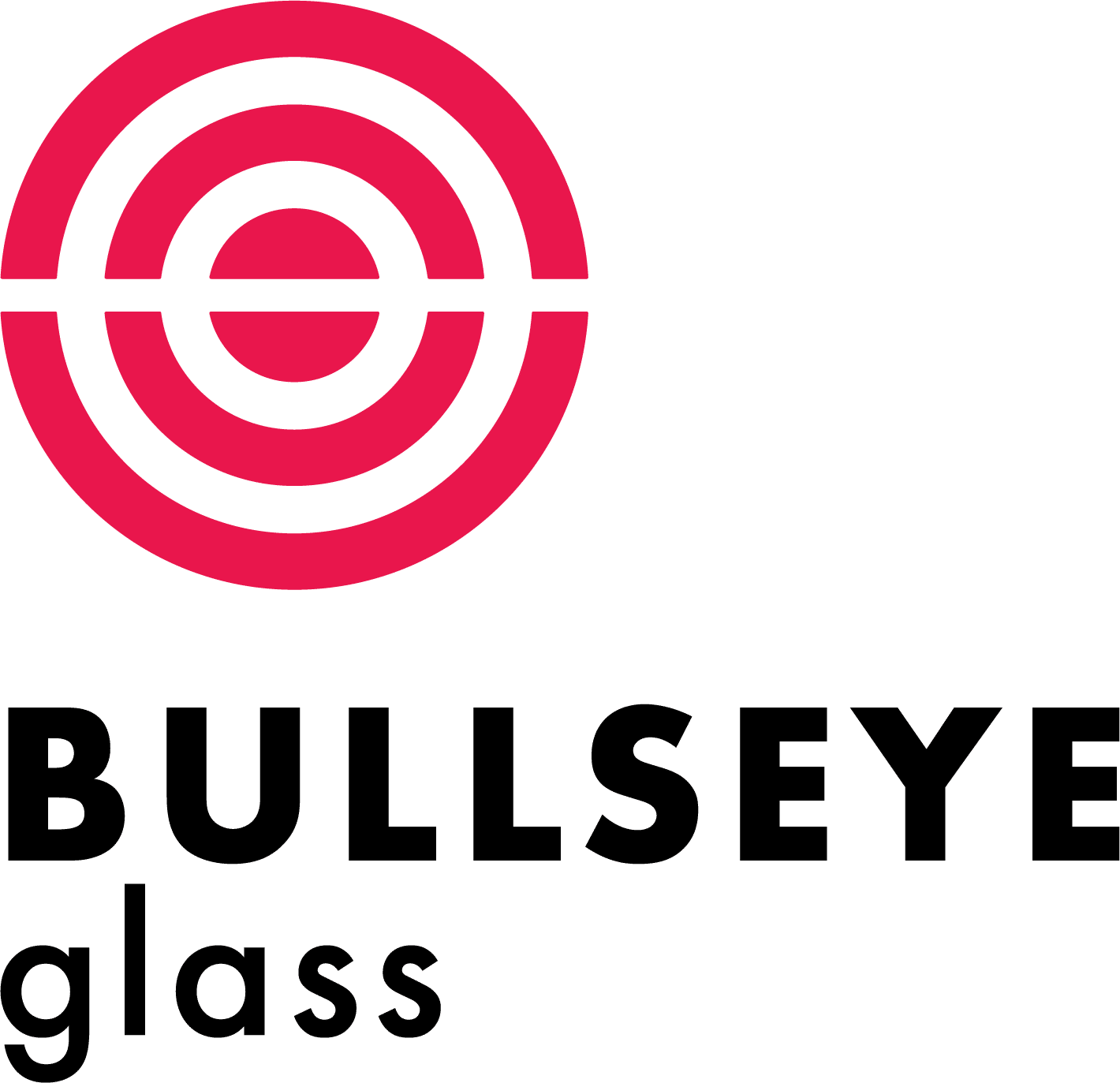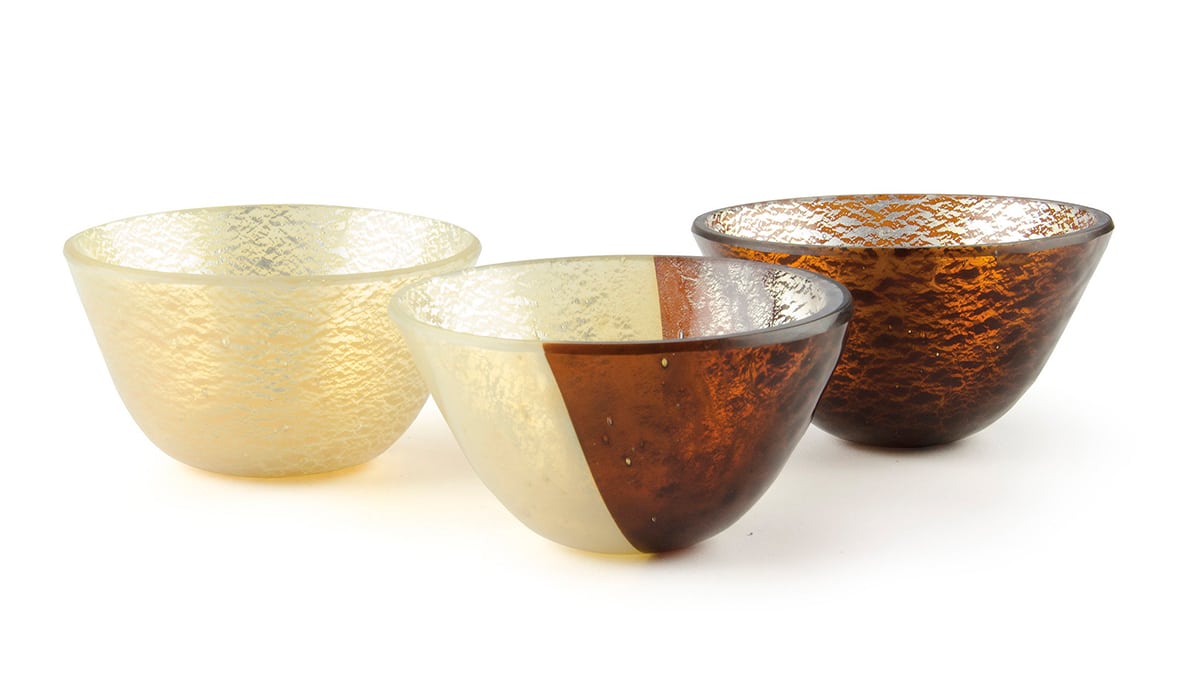Alchemy Clear, Silver-to-Gold and Silver-to-Bronze
001015 Silver-to-Gold
001015 Silver-to-Gold
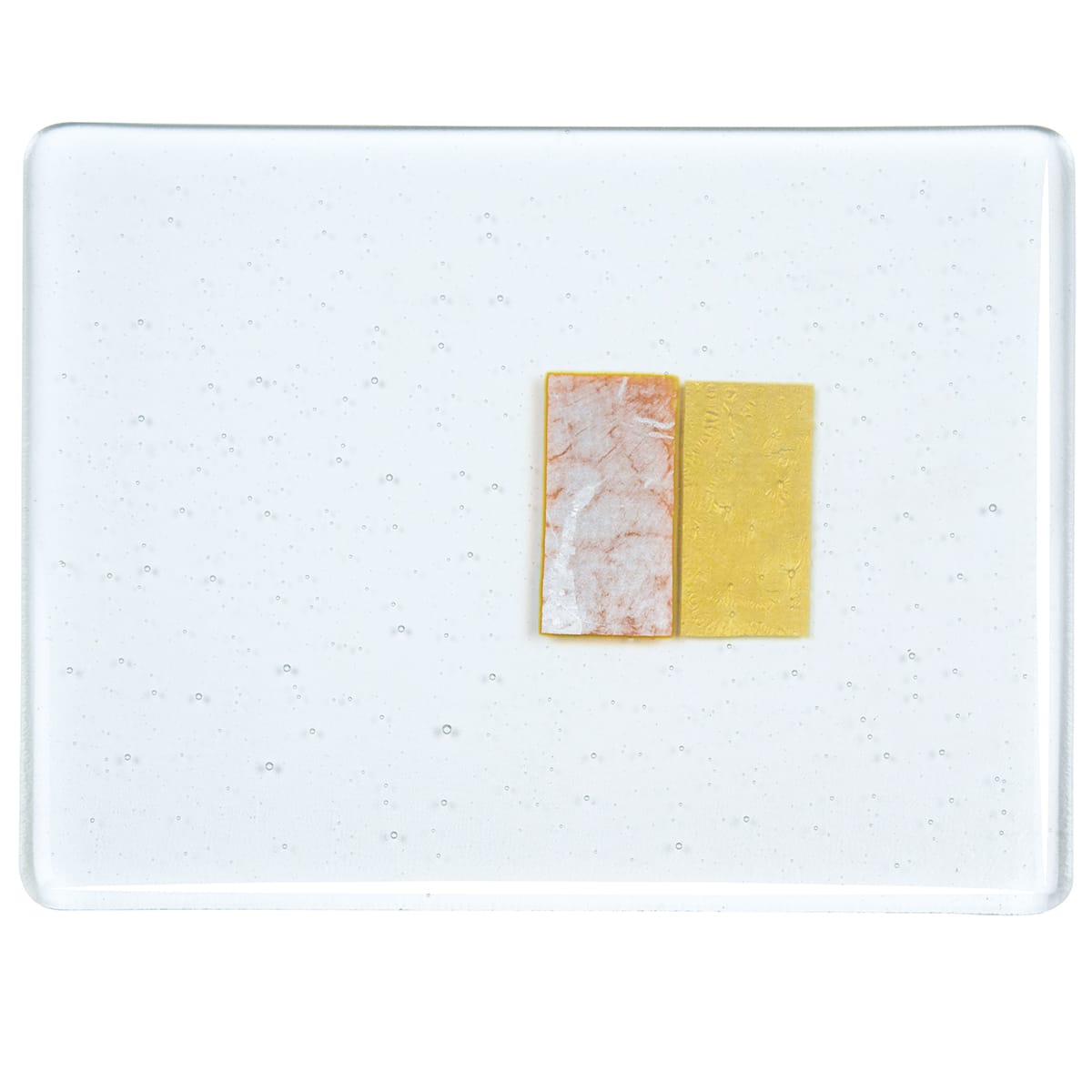
Reactive Potential
Reacts with Silver
Cold Characteristics
Unfired sheet has a faint blue tint.
Working Notes
Upon firing, silver foil turns a golden color wherever it is in contact with 1015 (Alchemy Clear). On the sample tile above, the left side illustrates silver foil after being fired uncapped on top of 1015. The sample’s right side illustrates silver foil after being fired between a layer of Clear (any style) and 1015, with 1015 as the cap. (Faint blue color may be evident in any fired work containing 1015.) Expect variations in effects to result from different sources and thicknesses of silver, glass production runs, and heatwork (including firing times, temperatures, and number of times fired).
For color development, we recommend a 1 hour soak at 1225°F in the pre-rapid heat section of a firing cycle.
NOTE: When firing silver foil in the kiln, be aware that the silver can deposit onto the kiln shelf, potentially affecting silver-sensitive glasses in one or more subsequent firings. This can happen even when new shelf release (paper or primer) is applied to the kiln shelf. When fired between layers, silver is generally more contained and less likely to affect the firing surface.
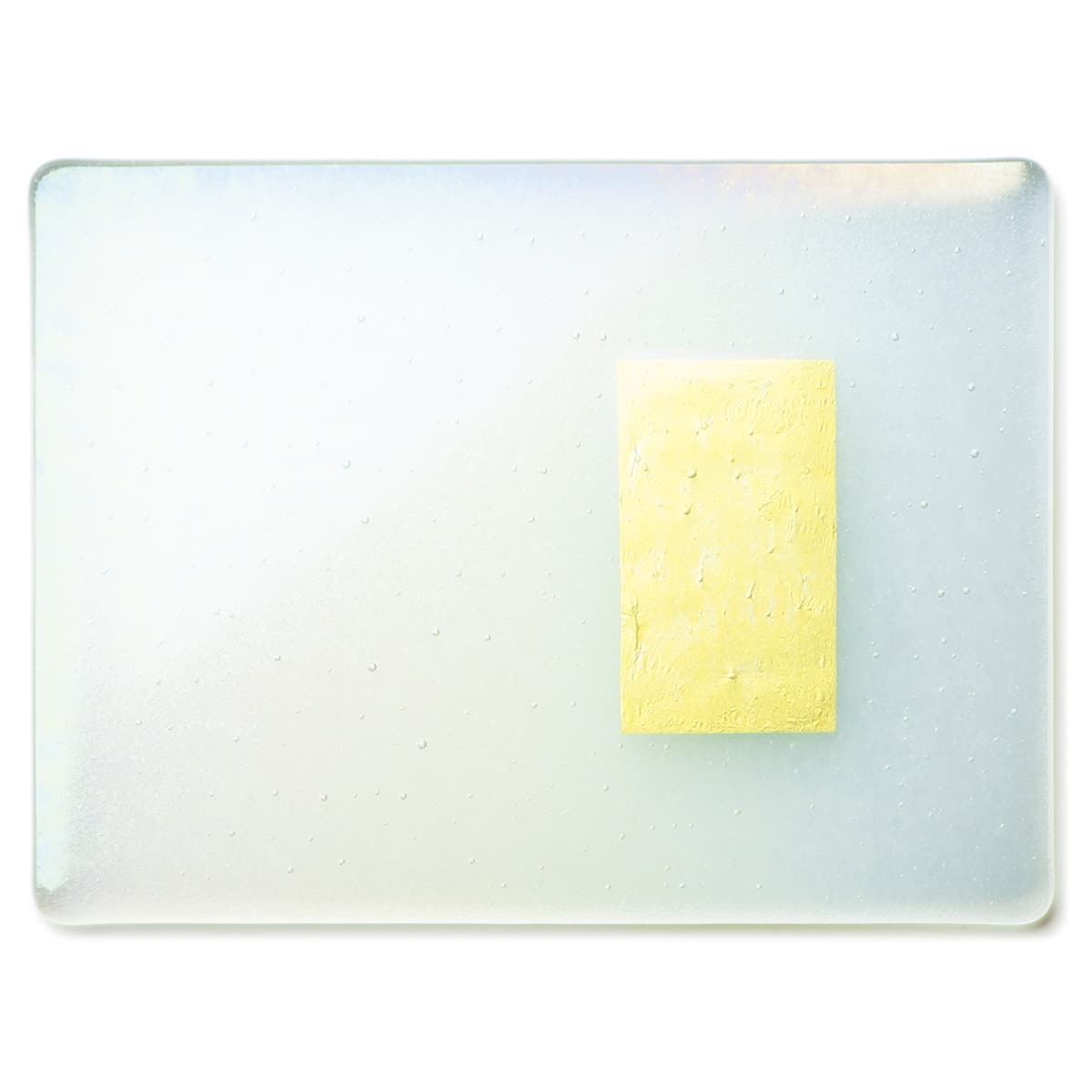
Rainbow Iridescent
Because iridescent coating acts as a barrier, don’t expect much reaction when using silver directly against this coated
glass. That said, the silver might still make contact with the glass through thinner sections of the iridescent coating. This may result in pale gold effects caused by 1015’s silver reactivity, detailed above. Results vary widely, both in terms of the effect’s strength and color.
001016 Silver-to-Bronze
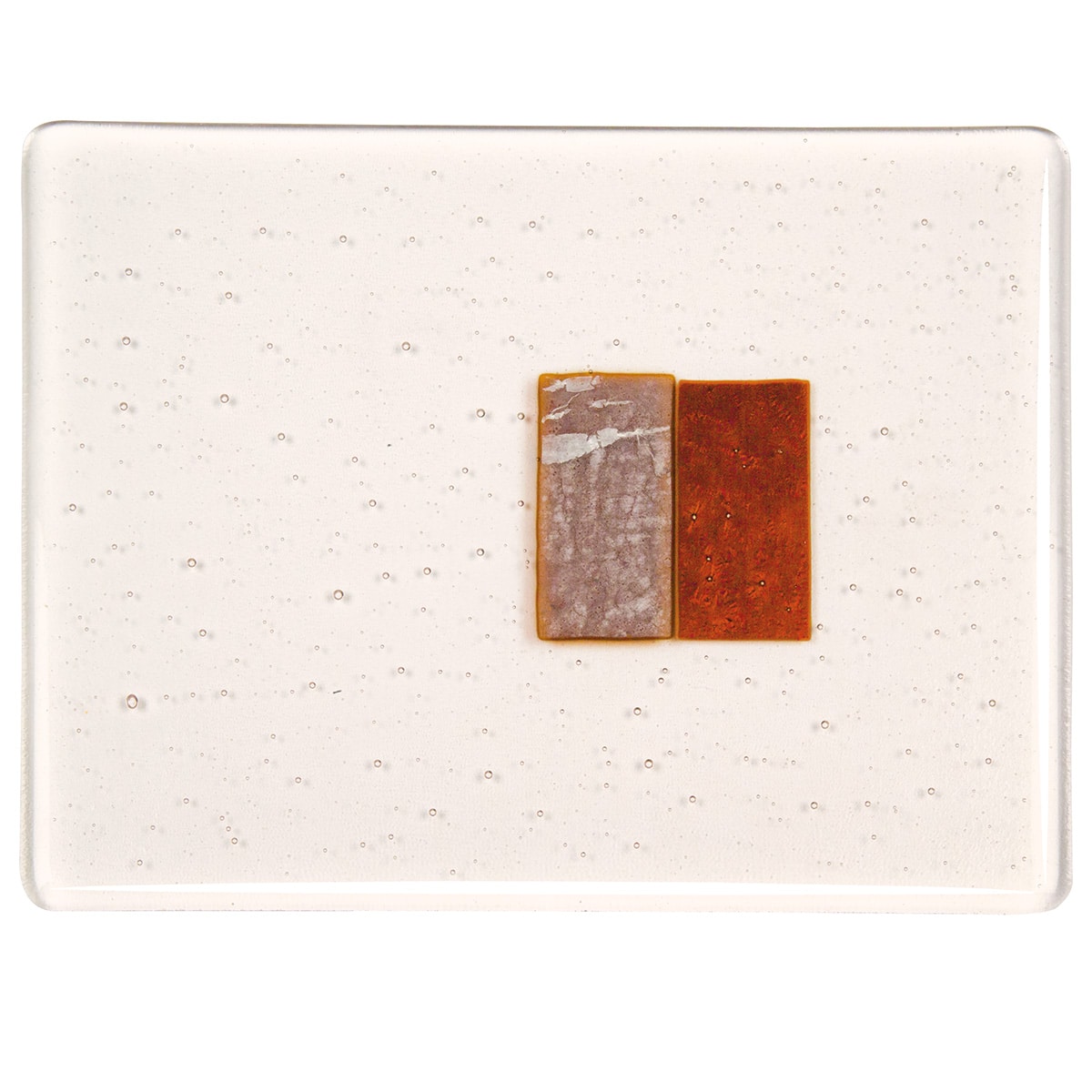
Reactive Potential
Reacts with Silver
Cold Characteristics
Unfired sheet has a faint coral tint.
Working Notes
Upon firing, silver foil turns a bronze color wherever it is in contact with 1016 (Alchemy Clear). On the sample tile above, the left side illustrates silver foil after being fired uncapped on top of 1016. The sample’s right side illustrates silver foil after being fired between a layer of Clear (any style) and 1016, with 1016 as the cap. (Faint coral color may be evident in any fired work containing 1016.)
Expect variations in effects to result from different sources and thicknesses of silver, glass production runs, and heatwork (including firing times, temperatures, and number of times fired).
For warm-hued bronze color development, we recommend a 1 hour soak at 1225°F in the pre-rapid heat section of a firing cycle. If fired rapidly through this temperature range, the resulting hue will be a lighter metallic.
NOTE: When firing silver foil in the kiln, be aware that the silver can deposit onto the kiln shelf, potentially affecting silver-sensitive glasses in one or more subsequent firings. This can happen even when new shelf release (paper or primer) is applied to the kiln shelf. When fired between layers, silver is generally more contained and less likely to affect the firing surface.
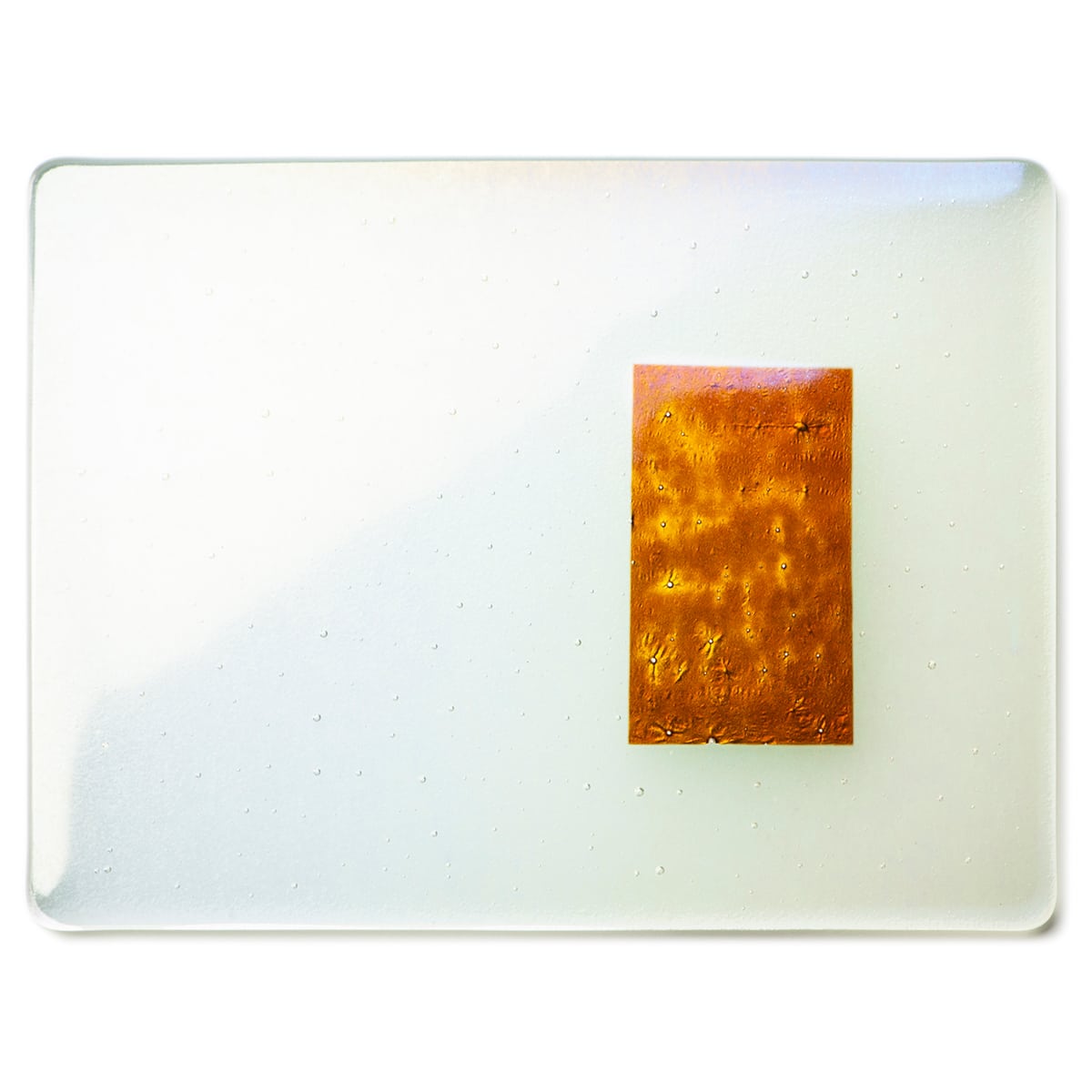
Rainbow Iridescent
Because iridescent coating acts as a barrier, don’t expect much reaction when using silver directly against this coated glass. That said, the silver might still make contact with the glass through thinner sections of the iridescent coating. This may result in bronze effects caused by 1016’s silver reactivity, detailed above. Results vary widely, both in terms of the effect’s strength and color.
